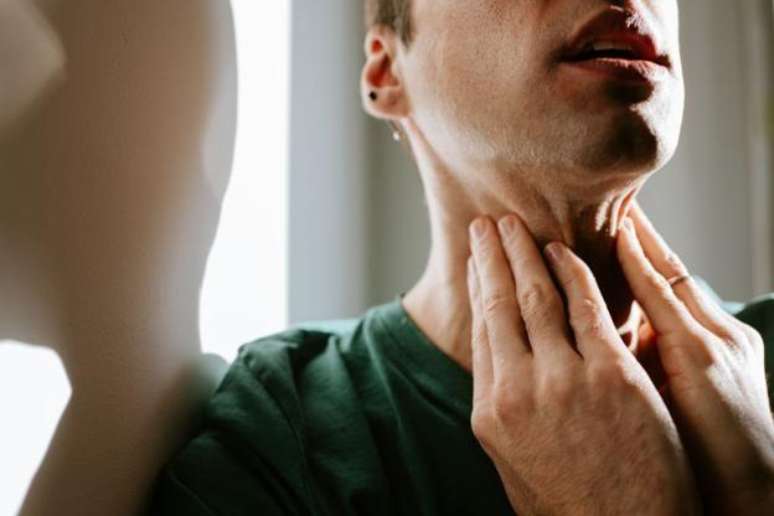‘Mewing’ is the trendy exercise on social media. Hundreds of viral videos teach you how to perform this technique while posing for a selfie, leaving your jawline defined and perfect.
If a person puts their finger to their lips making a silencing gesture and then points to their chin, they are telling us not to disturb them. She is practicing her routine meow.
Meowing It’s the exercise of fashion on social media. Hundreds of viral videos teach how to perform this technique while posing for a selfie, leaving our jawline defined and perfect. It’s a trick that model Bella Hadid also uses.
And presumably this doesn’t just help you look good in the photo.
They say that, practiced regularly, the technique would help define the jaw line, reduce a double chin and even align the teeth.
Meowing is trendy, but it’s nothing new

The idea is not new. It was the British orthodontist John Mew who, in the 1970s, began treating children who came to his clinic on the outskirts of London with an alternative treatment he created called orthotropia.
With it, the dentist promised not only to straighten the teeth, but also to “improve the face.”
Orthotropy is based on the idea that oral posture can influence facial development, improve the shape of the jaw and even the alignment of the teeth.
Through some practices, such as palate expansion and correct oral posture, the goal is to guide facial growth until a perfect face is achieved.
Jonh Mew has been practicing orthotropics for 30 years, but the technique only became popular in 2012, when Mike Mew, his son, started sharing it on his YouTube channel.
In 2018 the technique already had millions of followers, who decided to rename it meow in honor of its creators.
It is precisely these followers, through their channels and profiles, who propose using this therapy, initially aimed at children, as a beauty treatment for adults.
OR meow It is therefore a technique that originally aims to modify the shape of the face, using, among other methods, a certain oral posture.
Its main foundation is to position the tongue upwards and attach it to the roof of the mouth. The tip of the tongue should be positioned just behind the upper front teeth, with the rest of the tongue close to the roof of the mouth and the teeth closed. The lips must also remain closed.
Experts recommend holding the position for as long as possible, until it becomes a habit and is performed naturally.
Mewing promises a lot, but delivers little
By practicing this routine, the meow promises to define the jaw line, giving it a more pronounced shape without the need for surgery or devices. But not only that: its followers claim that this practice also helps to align the teeth and treat sleep apnea, sinusitis, snoring and jaw pain. All this, without scientific basis.
Let’s do it step by step.
The jaw is a horseshoe-shaped bony structure that forms a sort of letter L on each side of the face. The angle formed in this letter L can be changed throughout life.
During childhood and adolescence, bone growth itself influences the shape of the jaw. However, in adulthood, the most important cause that can alter the structure of the jaw is bone resorption due to tooth loss.
In addition to this, if we want to significantly change the shape or arrangement of our jaw, we will have to resort to the use of corrective braces or maxillofacial surgery.

Forcing the tongue position can be counterproductive
The tongue is a very complex muscular organ made up of 17 muscles. These muscles are designed for functions such as speaking, chewing, and swallowing. In other words, the tongue prefers to explore flavors and play with words rather than spend hours pressing on the walls that form our palate.
Forcing the position of the tongue, something proposed by the meow, Not only will it not bring benefits, it may pose risks, many oral health professionals warn. These include, for example, changes in the TMJ (temporomandibular joint) or the shifting of the teeth, rather than their precise alignment.
Given all this, it is no surprise that in 2019 Michael Mew was expelled from the British Orthodontic Society, accused of providing inappropriate treatments and promoting alternatives not supported by scientific orthodontics.
Despite rejection by the scientific community, the practice of meow It has permeated society and is gaining more and more followers thanks to some influencers who flood social media with their “before and after” photos.
This confirms that the internet continues to be an excellent springboard for the spread of rumors without scientific basis. Fortunately, it also has a legion of quality professionals and science communicators who have dismantled the claims of this technique one by one.
In terms of health, we follow the advice of professionals. Maybe in the photo we will not look as beautiful as we would like, but we will be healthier.
Gema Díaz Gil is a professor of human anatomy and embryology at Rey Juan Carlos University, Spain
*This text was originally published on the science communication website The conversationand is reproduced here under a Creative Commons license. Light the original article (in Spanish) on the website The conversation.
Source: Terra
Ben Stock is a lifestyle journalist and author at Gossipify. He writes about topics such as health, wellness, travel, food and home decor. He provides practical advice and inspiration to improve well-being, keeps readers up to date with latest lifestyle news and trends, known for his engaging writing style, in-depth analysis and unique perspectives.









